Translated by Miguel Fernández Garrido.
In June 2006 a good friend of mine gave me a hot tip on “one of those air-cooled VW bangers that you like”, a white, black-roofed Volkswagen Karmann Ghia Typ 34 that was for sale in www.anciennes.net with an asking price of 7,200 euros.
It´s recently been 8 years and three football World Cups -if I remember correctly that year Spain was sent home in the quarter finals. The night of that day I acquired the Typ 34, all around France people were in their homes biting their nails watching the elimination match between France and Brazil; meanwhile, I was sleepless in my hotel room thinking about all the things I would have to do to get my new car in top condition. It´s funny how, far from being a football fan, I remember these things as if they had happened yesterday. But more on that later, now it´s time for a short history lesson on the Typ 34, a relatively unknown model.
Volkswagen Karmann Ghia Typ 34, Razor Edge or Der Grosser Karmman Ghia

1. The VW Karmann Ghia Typ 34 is also known as “Razor” due to its body full of sharp angles, or as “Grosser Karmann”, the Big Karmann.
In 1961 Volkswagen decides to add a new model to their range, and they certainly do not waste any time looking for a fancy name for it. If the Beetle was the Typ 1 and the van the Typ 2, following this German logic the new model would be dubbed Typ 3. But this was the in-house name, and if you think the commercial name would be more seductive, you´d better think twice: in the 1961 Frankfurt car show the new car is introduced as the VW 1500, the biggest Volkswagen to date.
The new Volkswagen Typ 3 came in 5 different body types – the TL or fastback version would arrive later-, all of them two-door despite the fact that the VW 1500 was considerably bigger than the Beetle. The range included a sedan, a station wagon – dubbed Variant or Squareback-, a convertible, and two sports models -a coupe and a cabriolet- who were commissioned to Osnabruck´s coach builder Karmann, who would be responsible for their design and manufacturing.
None of the two convertible models passed the pre-production tests and were never marketed, although one can find them in the early sales catalogs. The reason was, the car being significantly bigger than the Beetle, the frame was too flimsy as it was kept together by the thin windshield frame.
Although the Typ 3 and the Beetle were built similarly -a chassis were the drive-train is assembled and the body bolted to- the Typ 3 is really a very different type of car, superior to the charismatic people´s car with which Porsche fooled Hitler – Adolf had told Ferdinand to design a car capable of carrying 4 passengers at 100 kph, that was cheap, and that used 10 liters of gasoline per one hundred kilometers; none of these conditions were fulfilled by Porsche´s model, but the Führer gave the project the go ahead anyway.
A longer wheelbase and tire tracks, a better weight distribution, an improved torsion bar suspension -patented by Porsche- and a new, more compact and powerful air-cooled engine made the Typ 3 a more spacious, more luxurious, faster and safer car than the Beetle.
A great deal of the spaciousness gained is due to the placement of the air turbine that cools the 4-cylinder boxer engine, which is now situated right after the crankshaft, rather than on top of the engine. This disposition achieved a flat surface on top of the drive train that could be used as a second trunk -in this car the trunk is situated in the front end.
The “sports” models were commissioned much in the same way the successful Karmann Ghia Typ 14 was – which used the same platform and drive train of the Beetle. They were designed by Italian designer Ghia -they are specifically the work of Sergio Sartorelli, who also designed the Osi 20M Coupe, the Fiat 2300 S Coupe, the Alfa Romeo Sprint Coupe and others- and were built by the prestigious coach builder Karmann.
When the Typ 14 was first introduced, there was some controversy as Chrysler considered the car a knockoff of their own D´Elegance model. In the case of the Typ 34, it was GM´s feathers that were ruffled due to the car´s likeness to the Chevrolet Corvair, but in none of those cases any further action was taken.
The VW Karmann Ghia Typ 34 became the most expensive Volkswagen at the time: its price more than doubled the Beetle´s and it was even more expensive than the most basic versions of the Porsche 356 -which incidentally was assembled in the very same assembly line at a cost of 1,146 pounds, while the VW Karmann T 34 cost 1,267. The steep price was in part justified by the sheer quantity of labor hours that its complex body demanded, but also by the car´s full equipment. The “Razor” was the first car to have the fog lights encased in the front end, it also sported an electric sunroof, electric clock, a glove compartment with a lock, chrome-plated trim etc. However, its price was still too close to a Porsche 356´s, and so it didn´t sell as expected. Its run lasted until 1969, and only around 40,000 cars were made, while the much cheaper Typ 14 would still be in production until 1974 -since 1955.
VW Karmann Ghia Typ 34, one of the most difficult to restore classic cars
With such a limited production, the Typ 34 is a car that is naturally difficult to find, and this is not the only problem that haunts this model. The edges of the body are prone to mud accumulation, which causes rust to appear, and since it is no Porsche, they have historically not been valued very much by car enthusiasts, so most have rusted away. The most optimistic model censuses talk about 3,000 survivors.
This makes finding the parts specific to the model very difficult. The mechanical part poses no problem, as it is shared with the rest of Typ 3 VWs, which were a sales success, and so there is no problem finding any nuts, bolts, springs, carburetor and so on. However, body parts such as headlights, tail lights, glass, bumpers, upholstery, rubber etc are almost impossible to find.
In spite of this I didn´t shy away from the challenge of restoring a Typ 34, and aware of the parts problem as I was, I was interested in finding the most complete and original example possible, which happened in 2006.
Rubén, buddy, there´s one of those Karmann cars you like for sale in France
That´s what my good friend told me on the phone in June 2006, talking about an ad he had seen on the internet. The moment I saw the pictures, I fell in love with Cyrano (I named the car Cyrano because I found it in the region of Bergerac). For the untrained eye its overall look was something to worry about, but I could see the car had all its original parts, all the chromed trim -including the windshield frame moldings, rocker panel trim, bumpers, headlight bezels, the original MY66 hubcaps with the embossed VW logo, everything- and that behind the appearance of neglect, there was a solid foundation.
After exchanging four or five emails in broken French, I reached an agreement with the seller. If he lowered the price to 5,500 euros I would got to Yvrac, near Burdeaux with a flatbed to pick it up and bring it home to Spain. He agreed to the deal but would give me the original rims and keep the ATSs the car had in the pictures. “Pas probleme”.
Cresslime, the friend who gave me the hot tip, lent me his car and flatbed and sponsored the project, so I set out from Galicia, France-bound in his Saab 9-5 SW and on July 1st at 3 pm I was in Burdeaux, in the middle of a raging heat wave looking for some Pierre, who was wearing plastic frame glasses and a striped T-shirt.
After having a good look at the car and test-driving it -without a clutch though- we closed the deal and signed the papers. Then, after showing me his Delahaye 4×4 he helped me and my girlfriend find a nearby hotel with space for the cars and the flatbed while all around France people started to sit back on their couches in front of their television sets to watch the World Cup match with cold beverages to find some relief from the heat that killed 8 people that day -despite the Burdeaux council precautions such as a free fan giveaway.
The night was a long and sleepless one. Not so much because of the celebration of the victory over Brazil or the heat, but because there were a lot of things to think about: what would be the matter with the clutch? Do I keep the original color? Where could I find a new upholstery for the front seats?
Volkswagen Karmann Ghia Typ 34. The restoration
We started the return trip back to Spain early in the morning on July 2nd -with a stopover to see family in Burlada– before the heat started to be too unbearable, as I did not like the idea of driving the Saab 9-5 in 40 degree weather while pulling a 1,500 kilo trailer. On July 3rd I started the easy part of the restoration process: removing the parts, classifying them, choosing which parts to repair, which ones to change and so on.
Everything goes fine as I go on with this process and I find no unwanted surprises. The problem with the clutch is that the throw-out fork that triggers the throw-out bearing is broken, the doors come out of their place because of worn hinges, which are impossible to find but which can be refitted in a machine shop, and an upholsterer form Vigo gives me great news as he has the same type of material as the original that is needed to refurbish the front seats -though at the price of Connolly leather.
Everyhing goes fine, but I am working with a tight deadline. The idea is to finish the restoration in time for the Classic Car Show in Porto and to display it there in order to sell it, to pay my friend back and to get some profit for myself.
I don´t like white cars at all and I believe a more seductive color will help sell the car more easily. Since the car is now stripped to bare metal, I decide to change the white for another original VW color from the 1966 catalog. My favorite is navy blue with a white roof but there is a problem: the interior is black and so the roof must also be black, so that means no navy blue. The next best thing is the red color that it currently has.
Two months later, I find myself finishing up the project, fitting the headlights and I finally turn the ignition key for the first time in the Karmann´s second life. My cousin Javi comes from Ribadavia to share this moment with me and we drive together to the reservoir in Castrelos to take the first pictures of the car. I will never forget that moment.
And so October comes and once again we load the Karmann on the flatbed pulled by the Saab and take it to Porto to sell it there. A friend comes along and provides us with red license plates so that we can drive the car and check that everything is OK. As we expected, everything works fine -except the left tail light- and I am as happy as a cucumber as I drive on the Portuguese highways near the Exponor convention center in Porto.
The car show was OK, but no one was interested in Cyrano, which left me with a bittersweet feeling: on the one hand I would be able to enjoy driving the car some more, but on the other hand it sucks to see how your work of three months is not appreciated.
After putting up some for sale ads and getting some calls from a few people who were not serious buyers, in December I make my decision: I will keep the Karmann for myself, register it in Spain, and sell my Saab 900 Turbo 16 S Cabriolet to pay my friend back and thus be finally able to say that I drive my own classic car.
The VW Karmann Ghia license plate number 1152 FKD
It is a funny fact that, although Cyrano was first registered in November 1966, it turns out the car left the Karmann facilities in Osnabruck on December 24th 1965 -as stated in a certificate of manufacture I ordered-, more or less around the same time I am able to get the Spanish papers, which finally happens on January 3rd 2007. I can at last drive the car on the street and enjoy it.
In April, I am contacted by the people from the magazine Coches Clásicos, who are interested in writing a report comparing the Karmann with a Saab Sonnet III, another car I had the privilege to help restore, as it is owned by a good friend. This was the first long road trip I took in the car, from Vigo to Madrid and back, and there were absolutely no issues. If you would like to read the comparative test-drive, you can have a look at Coches Cláscos issue number 29.
Despite it being “my new car”, the VW Karmann Ghia 1600L is not a total stranger to me. Far from it, actually. The sound of its twin carburetor 1.6 engine, the touch of its gear stick are like old friends to me, and that´s probably one of the reasons why owning this particular car was so appealing to me. My dad taught me how to drive when I was 8 years old in his 1968 Volkswagen 1600L… Variant. Driving this car 22 years later brings back the memories!
Although the car was built in 1965, it is a 1966 model, so it has front disc brakes and wheel hubs for 4 lug nut rims. The headlight control switches are made of white bakelite and replace the old push buttons of earlier models, although it still has a 6 volt electrical installation -although I converted it to 12 volt during the restoration process.
In my opinion, the 1966 Karmann Ghia Typ 34 is the best of all the model years, pairing technical improvements with a classic car look. In 1967 the chromed tail lights bezels would be substituted for smaller ones and the beautiful dash painted in the same color as the body would be hidden by a plastic cover in imitation of wood that I personally don´t like.
The driving position is very low, it practically feels that I am sitting one inch away from the tarmac, and although the spring seat is very comfortable, it does not feel as comfortable as the memory I have of my dad´s Variant. Part of the reason is the front suspension, which is shorter, as well as the visibility, which, good as it is, it is not as good as the Variant´s. In fact, the glass is another one of the peculiarities of the Karmann Ghia Typ 34, as it was the first VW to have curved side windows. Up to that point, VWs side windows -including those of the non-Karmann Typ 3- were flat, and both sides were identical.
The handling is smooth despite the car not having power steering. It helps that the weight of the engine is not resting on the front axle, and this is also helpful when stopping the car: the car´s braking distance is very decent even for modern standards, and it stops in a completely stable way.
I could drive some Beetles in my time and the differences between a type 1 chassis and a type 3 are abysmal. This Karmann -but also the Variant and the sedan- handles much better than a Beetle and sits much better on the road. And my Karmann still has independent suspension with trumpet-shaped C V axles, without an U-joint on the wheel´s side.
In 1968 these axles were substituted for others with both inner and outer CV joints, and so the handling was much improved, since the fluctuations in the downward movement of the rear axle were reduced. One must, however, exercise some precaution when driving the Karmann, for weight transfer due to changes in the center of mass location may cause the inner and outer rear wheels to get stuck and it is easy to tailspin if one is not driving the car with all five senses.
The 54 HP the boxer engine renders will not win you any race, but are enough to get you a nice picture from a speed camera, and they will allow you to drive at the maximum legal speeds on the highway. But if you are going to pass a truck that is driving at 90 kph, make sure you have plenty of space, for it takes the Karmann a while to go from 90 to 120 kph.
Even if practicality is not a quality one expects or looks for in a sports car, the Karmann has a couple of remarkable features in this regard, such as its cargo carrying capacity. The front trunk is really spacious, and although the cargo space at the rear is not so roomy, there is still another fairly big storage area in the car behind the rear seats.
The fact that the car has three cargo spaces allows for an optimal weight distribution that somehow neutralizes the quirky behavior of a rear-mounted engine car. In fact, the gas tank filled to the top, if one carries a toolbox with a complete tool set the weight distribution is practically 50% over each axle.
The car is not an easy one to drive for a person used to driving modern, technologically, estate-of-the-art cars, but that doesn´t mean it is uncomfortable or dangerous, it simply means one must focus on driving the car and forget about checking their wassap for a while, or trying to find a radio station on the dial.
I love driving the car on B roads, away from traffic. Not because I am afraid the car might overheat or something might break. On the contrary, I know the car is more reliable than most of the cars I test drive each week, and I know it will start if it has gas and oil, unlike a modern car, full of fickle sensors and control units. What I am really afraid of is a driver who is texting and does not realize I am stopped at the light and…
Today, I don´t feel sad on the way back to the car park, as I know tomorrow I will drive it again to any quiet spot where to enjoy the sights and the beauty of the landscape, perhaps enhanced by the presence of the Karmann Ghia. For a sunset is still beautiful even if this car is in the foreground of the picture, which can´t be said of modern SUVs, which make the cities in the background look like a display of shoeboxes.
Thanks Cresslime for making it possible, thanks Viv for riding along, and thanks dad for teaching me how to do it with my own hands, as it is not the same if you have brought the car back to life yourself rather than buying it in perfect nick. This car has part of me in it, and that, like our former king Juan Carlos would say, “fills me with pride and joy”.

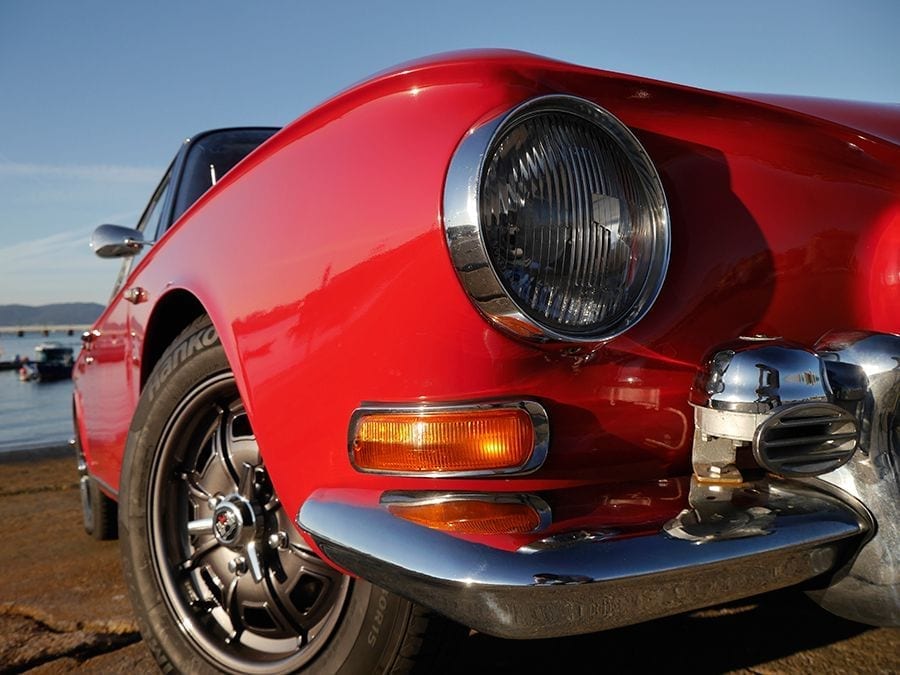

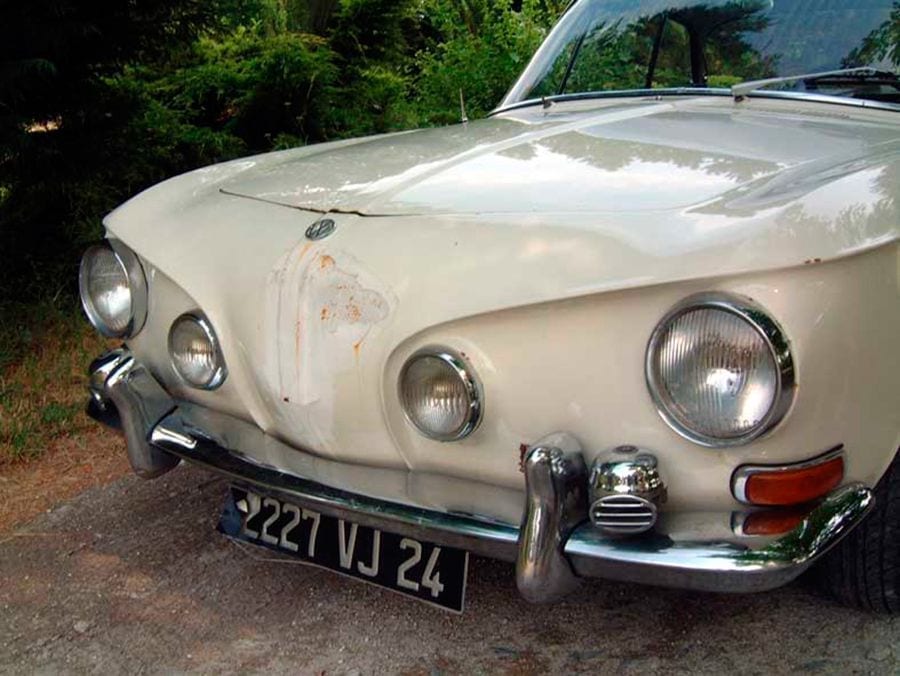
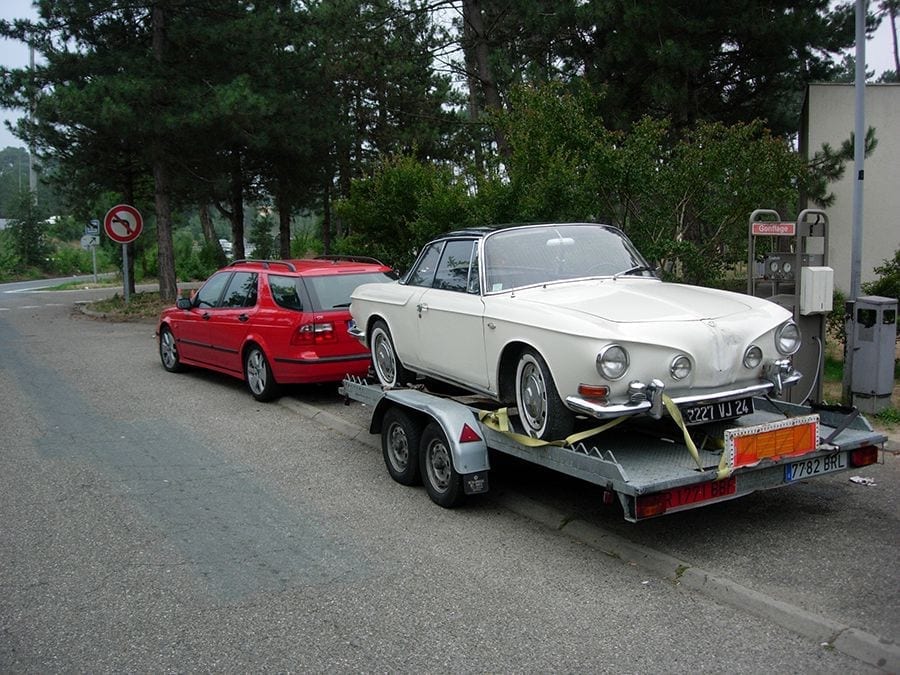

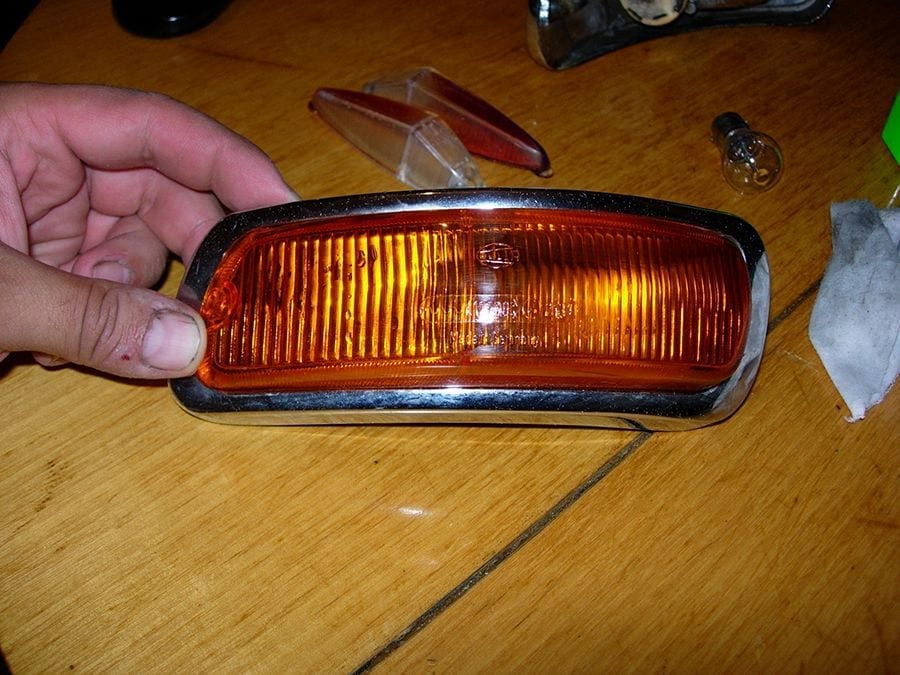


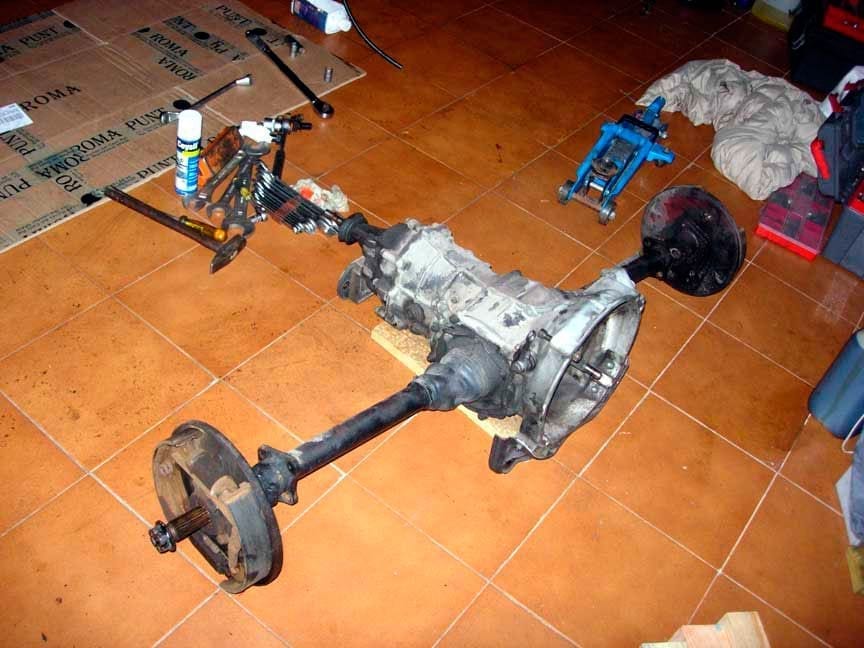
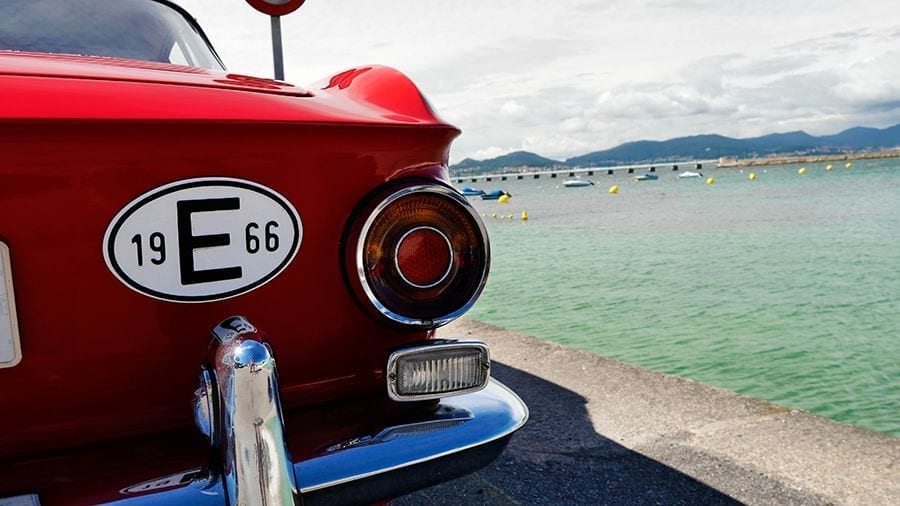
Luis
Rubén Fidalgo
Marco Mayorga
Marco Mayorga
Marco Mayorga
Luis Miguel Murcia Perona
Rubén Fidalgo
Rubén Fidalgo
alberto frost
Carlos Arreaga Salazar